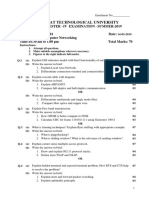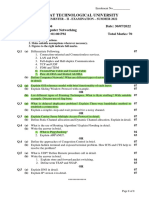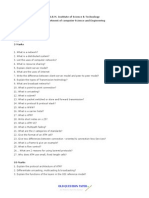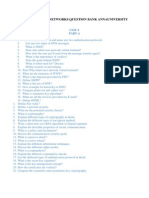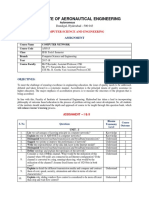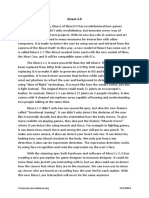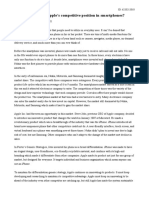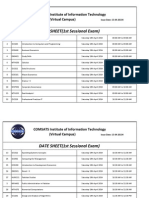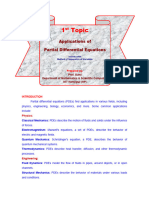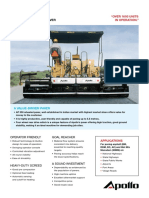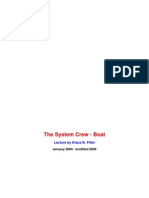Homework 1
CPE 341 - Computer Networks (2/2013)
Due date: Monday 28 April 2014
Network Layer
1a. When we send an e-mail to multiple-recipients, are we using multicasting or multiple
unicasting? Give the reason for your answer.
1b. Why is routing the responsibility of the network layer? In other words, why can’t the
routing be done at the transport layer or the data-link layer?
1c. In distance-vector routing, if a link distance decreases, all nodes quickly learn about it and
update their vectors. In the figure below, we assume that a four-node internet is stable, but
suddenly the distance between nodes A and D is decreased from 6 to 1. Show how this
change is propagated, and finds the new distance vector for each node after stabilization.
3 2 4
A B C D
6
A B C D
A 0 A A 3 B A 5 B A 6 D
B 3 B B 0 B B 2 C B 5 D
C 5 C C 2 B C 0 C C 4 D
D 6 D D 5 B D 4 C D 0 D
Data Link Layer
2a. Can two hosts in two different networks have the same link-layer address? Explain
2b. What type of topology is used when customers in an area use DSL modems for data
transfer purposes? Explain
2c. A link-layer switch uses a filtering table; a router uses a forwarding table. Can you explain
the difference?
2d. Describe the operations of the multiple access method called “token passing”. How does it
different from the “CSMA/CD” multiple access method?
�Wireless Networks
3a. Explain why the MAC protocol is more important in wireless LANs than in wired LANs.
3b. What is mulipath propagation? What is its effect on wireless networks?
3c. What are some reasons that CSMA/CD cannot be used in a wireless LAN?
3d. There is no acknowledgment mechanism in CSMA/CD, but we need this mechanism in
CSMA/CA. Explain the reason.
Physical Layer
4a. Describe multiplexing. Which of the three multiplexing techniques are used to combine
analog signals?
4b. What is the position of the transmission media in the TCP/IP protocol suite? Name the
two major categories of transmission media.
4c. Describe how omnidirectional waves are propagated.
4d. We need to use synchronous TDM and combine 20 digital sources, each of 100 Kbps.
Each output slot carries 1 bit from each digital source, but one extra bit is added to each
frame for synchronization. Answer the following questions:
a. What is the size of an output frame in bits?
b. What is the output frame rate?
c. What is the duration of an output rate?
d. What is the output data rate?
e. What is the efficiency of the system (ratio of useful bits to total bits)?
Multimedia and Quality of Service
5a. Why does RTP need the service of another protocol, RTCP, but TCP does not?
5b. What is SIP? Is there any drawback to prevent using it for video? Why?
5c. Can the combination of RTP/RTCP and SIP operate in a wireless environment? Explain.
5d. In a back branch, to make the lines of customers shorter, the manager has created three
lines. If there is only one teller that serves one customer from each line, what type of
queuing scheme do we have here?
5e. From 5d, if there is only one teller, but two lines of customers: the business and the
regular. The teller will serve the regular customers only if there is no business customer.
What type of queuing scheme do we have here? Explain.
IT and Computer Network Technology
6a. Briefly describe the following term/technology. What do you think about their effects on
future computer network technology?
a. Cloud computing b. Service-oriented architecture (SOA)
c. Big data d. Bring Your Own Device (BYOD)
--------------------------------------------------------








